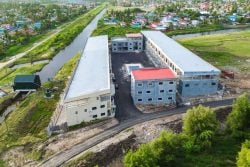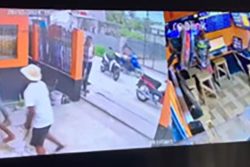Dear Editor,
The ongoing contretemps over the Guyanese Police Force’s (GPF) endemic corruption and proclivity to violence is symptomatic of deeper underlying structural conditions, originating in its colonial origins and immediate post-independence history. Unlike the Metropolitan “Bobbies” our GPF was armed from the beginning and staffed by Bajans to ensure less sympathy to local aspirations. Indian Guyanese recruitment in 1885 proved very satisfactory but was discontinued because the state feared they would ally with the indentureds on the plantations. The colonial use of the African-dominated GPF to suppress Indian Guyanese was continued by the 1964-1992 PNC regime and the incoming 1992 PPP regime could never count on their “professional” support. Sadly, the contradictions were not confronted directly for fear of retaliation and governmental policies tended more towards cultivating support in elements of the top brass, who then exploited the placatory relationship.
On January 17, 1999, when “ROAR against Crime” was launched, we cautioned re police reform: We should not be stampeded into taking ad hoc initiatives without formulating a plan that addresses the need to make fundamental changes in its structural base – or the malfunctions will continue unabated. We made some twenty specific recommendations and four medium-term structural changes were suggested. They are still relevant.
Our first recommendation, “Balancing the Force” echoed the conclusion of Dr Cynthia Enloe, who studied Guyana first hand, and concluded after a worldwide survey in her essay, “Police and Military in the resolution of Ethnic Conflict”: “Any lasting resolution of ethnic conflict may require that… the police and military be ethnically reconstituted at the top and the bottom. Resolution of inter-ethnic conflict will be tenuous if the security that is achieved is merely state security and not security for each of the state’s resident communities.”
Ever since we floated the above suggestion over a decade ago, we took a lot of flak. I hope we have now gone past the fears we were trying to undermine the Force. It is now widely conceded in all multi-ethnic countries that Forces that are more representative of the various elements of the communities are more effective ones. The hurdle that is now paraded most often is the rhubarb that “Indians do not join the Force”, in tones that imply that this reluctance may be some genetically inherited quality. We do not intend to expand on the historical bases for the Indian aversion to the Force but simply want to point out that PPP Minister of Home Affairs, Balram Singh Rai single-handedly proved between 1960-1962 that this could be overcome with the political will.
David Granger was a member of the 2003 constitutionally-mandated Disciplined Forces Commission that specifically examined the question of the “representativeness” of all the Forces. It agreed on the specific affirmative action steps that were to be taken to rectify the imbalances when it submitted its report in 2004, that was finally unanimously approved by Parliament in 2010. Yet, even though the Granger-led APNU/AFC coalition claims to have strenuously worked to “reform and rebuild” the forces after 2015, the “representativeness” recommendation was studiously avoided. The PPPC government continues with its old Top Brass-focused approach.
Recommendation 2 was, “Decentralising the Force”. The centralised command structure of the GPF has led to widespread ineffectiveness and dislocations. Administrative effectiveness is not the sole test of police competence, which should rather be the greatest effort in the promotion of the Rule of Law and entrenching citizens’ security. We recommended that the GPF be split into six separate forces: Metro-GT, Demerara, Berbice, Essequibo, Rupununi and a Central Force (like the FBI). Each Force would have its own Commissioner and its own command structure. The Central Force wound oversee a central Forensic lab, the Anti-drug Unit, Intelligence and international co-ordination.
Recommendation 3: Supplementing the Force: The first part proposed “Community Policing” which was supposedly embarked on but missed the point of embedding the GPF itself in the communities.
Recommendation 4: Streamlining the Force: We pointed out that only approximately 30% of the GPF are engaged in crime detection and prevention. We suggested the various non-policing elements , like immigration, be farmed out to civilian staff and each Police Force have its own Prosecutors Office manned by high calibre qualified lawyers and permanent staff. The streamlining would free up spending for real police work.
On the specific issue of GPF corruption, we believe while this always lurks in state institutions, it is facilitated by the refusal to impose force-wide professionalism and let the chips fall as they may.
Sincerely,
Ravi Dev




